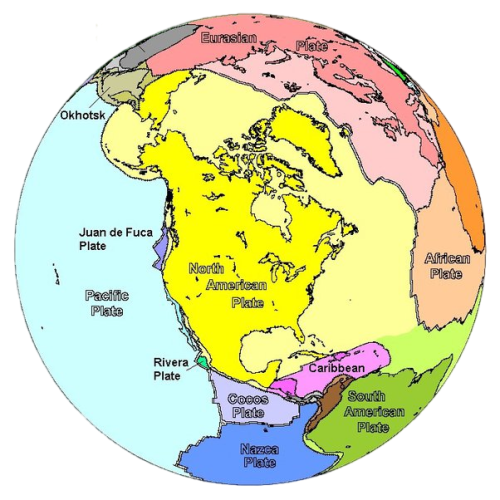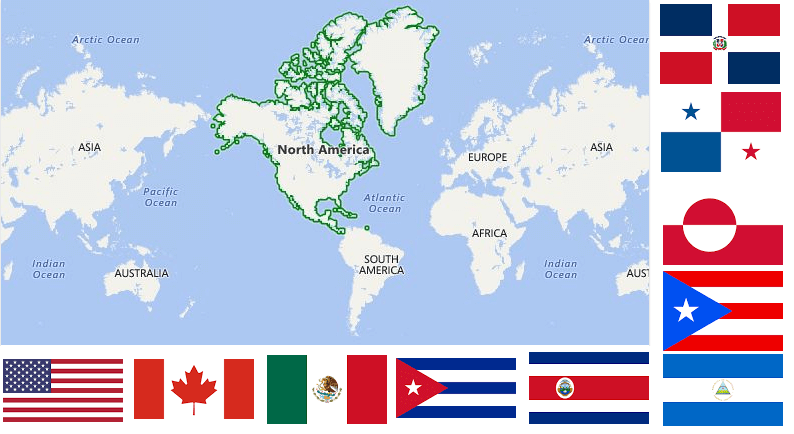Are there 23 countries in North America?
Are there 23 countries in North America? The number of countries in North America is a topic that often sparks curiosity and debate. While some sources claim there are 23 countries on this continent, others offer slightly different counts. To understand why this discrepancy exists, it’s essential to delve into geographical definitions, political considerations, and the diversity of territories that make up North America.
Table of Contents
Defining North America
North America is the third-largest continent, covering approximately 24.7 million square kilometers. It is bordered by the Arctic Ocean to the north, the Atlantic Ocean to the east, the Pacific Ocean to the west, and South America and the Caribbean Sea to the south. The continent encompasses a wide variety of climates, landscapes, and cultures.
Countries in North America
The commonly cited number of countries in North America is 23. This count includes the countries in Central America and the Caribbean, in addition to the mainland territories. Below is a list of these 23 countries:
- Antigua and Barbuda
- Bahamas
- Barbados
- Belize
- Canada
- Costa Rica
- Cuba
- Dominica
- Dominican Republic
- El Salvador
- Grenada
- Guatemala
- Haiti
- Honduras
- Jamaica
- Mexico
- Nicaragua
- Panama
- Saint Kitts and Nevis
- Saint Lucia
- Saint Vincent and the Grenadines
- Trinidad and Tobago
- United States
This list includes all the recognized sovereign states located in North America. However, the debate often arises from the inclusion of territories and dependencies.
Territories and Dependencies
North America is home to several territories and dependencies that complicate the total count of recognized nations. These territories are governed by other countries but are geographically part of North America. Some of the notable ones include:
- Greenland (an autonomous territory within the Kingdom of Denmark)
- Puerto Rico (an unincorporated territory of the United States)
- Bermuda (a British Overseas Territory)
Other smaller territories include the British Virgin Islands, the Cayman Islands, the Turks and Caicos Islands, and more. These territories are often excluded from the count of sovereign states but are undeniably part of the continent’s geographical and political landscape.
Criteria for Country Status
The criteria for defining a country can vary, which leads to different counts of how many countries there are in North America. Generally, a country is defined as a distinct territorial body or political entity that is recognized as an independent nation. This recognition can come from international bodies like the United Nations or through bilateral agreements between countries.
However, territories and regions that are politically and administratively dependent on another country do not typically count as separate countries, even if they have a distinct cultural and historical identity. This distinction is why Greenland, Puerto Rico, and similar territories are not counted as independent countries despite their unique characteristics.
The Caribbean Complexity
The Caribbean region adds another layer of complexity to the count of North American countries. The Caribbean
is composed of numerous islands and island groups, many of which are sovereign nations, while others are territories of various countries. For instance, the British Virgin Islands, the U.S. Virgin Islands, and the French territories of Guadeloupe and Martinique are not independent countries but are politically connected to the United Kingdom, the United States, and France, respectively. Despite being geographically in North America, these territories are not counted as separate countries in the tally of 23.

Sovereign States and Recognition
International recognition plays a crucial role in determining the status of a country. A sovereign state is typically defined by having a permanent population, a defined territory, a government, and the capacity to enter into relations with other sovereign states. Recognition by other states and international organizations such as the United Nations solidifies this status.
For example, Canada and the United States are widely recognized as sovereign states. In contrast, Puerto Rico, despite having a distinct cultural identity and a significant degree of administrative autonomy, is not recognized as an independent country because it is an unincorporated territory of the United States.
The Role of International Organizations
Organizations like the United Nations and the Organization of American States (OAS) provide a framework for recognizing and interacting with sovereign states. The OAS, for instance, includes 35 independent states of the Americas, encompassing countries from both North and South America. However, when focusing strictly on North America, including Central America and the Caribbean, the count aligns with the commonly accepted number of 23 sovereign nations.
Continental Definitions and Divisions
Geographically, North America can be divided into three regions: Northern America, Central America, and the Caribbean.
- Northern America generally includes Canada, the United States, and Mexico.
- Central America comprises Belize, Costa Rica, El Salvador, Guatemala, Honduras, Nicaragua, and Panama.
- The Caribbean includes island nations such as Antigua and Barbuda, the Bahamas, Barbados, Cuba, Dominica, the Dominican Republic, Grenada, Haiti, Jamaica, Saint Kitts and Nevis, Saint Lucia, Saint Vincent and the Grenadines, and Trinidad and Tobago.
This tripartite division helps in understanding the diverse geographical and cultural landscape of North America and clarifies why the number of countries is pegged at 23 when considering these subdivisions.
Also Read: Hollywood and the American Dream
Discrepancies and Debates
Despite the widespread acceptance of 23 countries in North America, some lists may vary slightly based on differing criteria or interpretations of geographical boundaries and political sovereignty. For instance, some might argue for the inclusion of Greenland as a separate entity due to its substantial autonomy from Denmark, despite it not being an independent country.
Cultural and Historical Perspectives
Cultural and historical factors also influence the perception and recognition of countries. The history of colonization, independence movements, and political evolution in North America has shaped the current landscape of nations. The Caribbean islands, in particular, have a rich history of colonization by European powers, leading to a patchwork of independent nations and territories.
Conclusion.
In conclusion, the commonly accepted number of countries in North America is 23. This figure includes all recognized sovereign states in Northern America, Central America, and the Caribbean. The inclusion of territories and dependencies can complicate this count, but these regions are typically not considered independent countries. Understanding the criteria for country status, the role of international recognition, and the geographical divisions within the continent helps clarify why 23 is the accepted number.
North America’s diverse and complex political landscape reflects its rich cultural history and the intricate processes of nation-building and sovereignty recognition. While there may be some debate and discrepancies in counts, the figure of 23 countries remains a widely accepted standard in geographical and political contexts.







